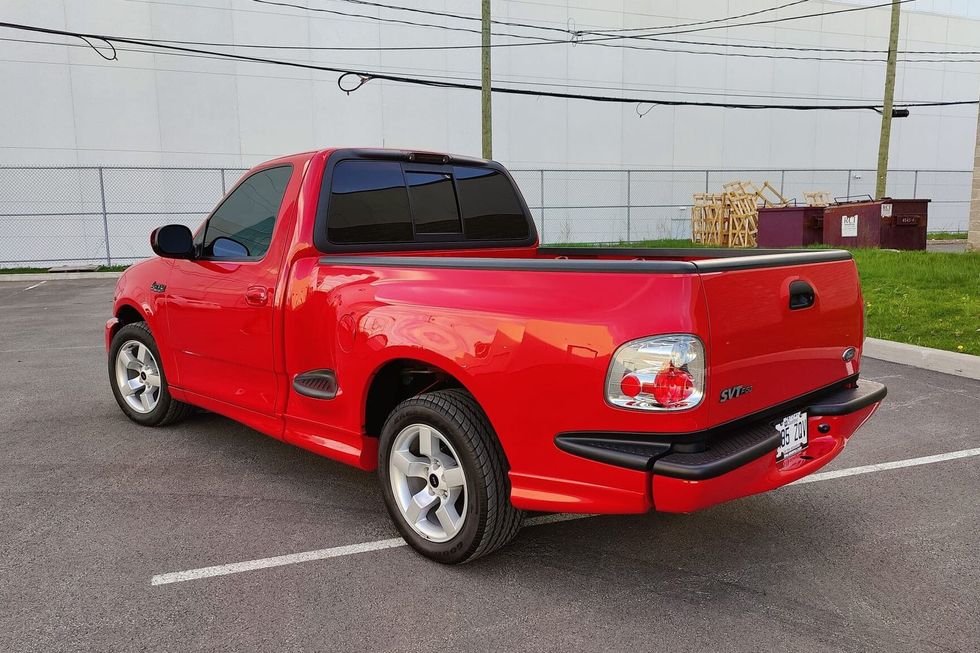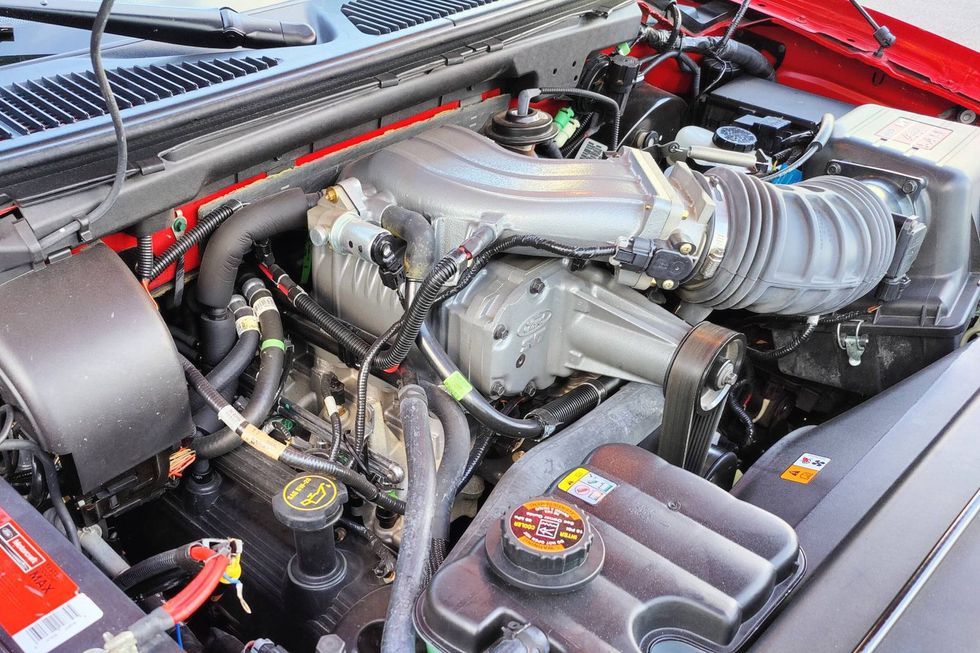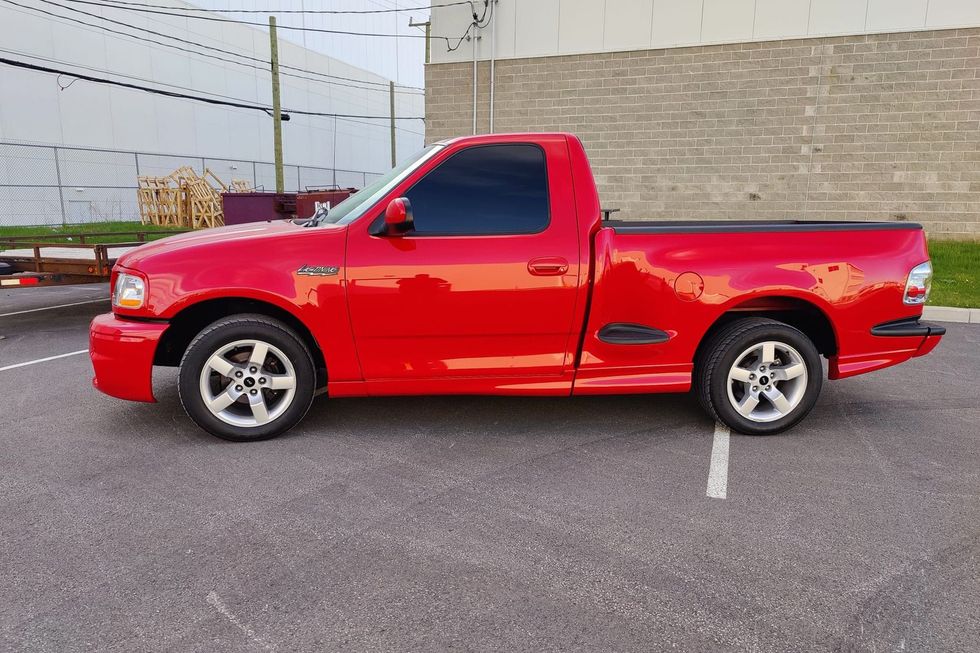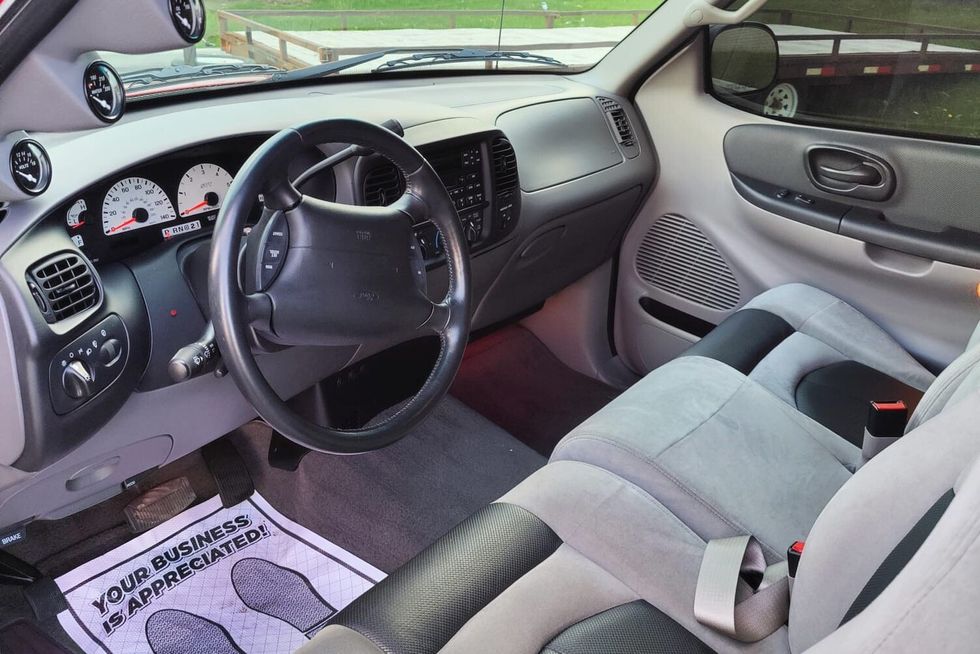1935-'36 Packard 120
This affordable, approachable American luxury car remains true to its origins
09/22/2018


When automotive writer and Hemmings Classic Car contributor/columnist Jim Richardson purchased his 1936 Packard 120 touring sedan in 1985, it wasn't exactly a champagne-and-caviar occasion, despite the brand's high-class reputation.
"I went outside and screwed a new California license plate to the stanchion on the shabby, smelly, dented old '36 Packard 120 Touring Sedan. My wife, Bette, and I got in and rattled away from Custom Auto Service in Santa Ana, California," Richardson wrote of the experience in Special Interest Autos. "However, during the time it took us to shamble a couple of blocks, blue oil smoke filled the passenger compartment. I hadn't paid much for the car because it needed a total restoration, and I knew its engine wasn't healthy, but nevertheless, I was surprised at the appalling crankcase blow by."

Though Richardson's car had been humbled by misuse and a lack of maintenance, the fact that he could afford to buy one in any condition (on a journalist's salary) speaks to the charm of the 120.
Reeling from the Great Depression, Packard recognized that it needed an upper-medium priced luxury car to survive, and when the company announced the new 120 or "junior" Packard, orders starting pouring in. While the cars were built on an assembly line at an alarming rate compared to the "senior" series Eights, Super Eights and Twelves, it still looked and felt like a Packard with the breed's signature grille, red hexagon medallions and premium interior materials. Just as importantly, the new junior series behaved like a Packard. The cars were powered by a straight-eight engine coupled to a three-speed manual transmission. Independent suspension up front and Bendix hydraulic brakes at all four corners were further indicators that this was a modern automobile from a premier automaker.
The Packard 120 remains a popular collectible today for many of the same reasons that they were popular when new. Sedans are affordable and can be found in the $20,000-$25,000 range, though convertibles are commanding three times that amount. The 120 was available in eight body styles, including two-passenger business coupe, convertible coupe, sedan, five-window club sedan, seven-window touring sedan and convertible sedan. Options included a single sidemount tire, a clock, a heater and a radio.
Will a 120 be an interesting and rewarding project or a fun recreational driver? Ask the man who owns one....
"One Twenty Packards are rugged and simple, but anyone who wants to restore or work on one should get a reprint of the shop manual for their year," Richardson said. "Also--not to blow my own horn--but my book, Classic Car Restorer's Handbook (Penguin Putnam, HP), features a lot of hands-on info about the Packard 120 that is not in the shop manuals. After having owned a '36, '38, '39 and a '41, I'd say they are very well-designed cars with no real design shortcomings given the era from which they came. Not only would I buy another, but I am on the lookout for a 1946 or '47 Clipper as well as a 1937 business coupe."

ENGINES
The 120 was powered by a 120hp, 282-cu.in. L-head straight-eight engine with five main bearings, fed by a Stromberg EE-14 two-barrel carburetor.

"These cars were very heavy-duty and well designed, with full-pressure lubrication, insert bearings and aluminum pistons in their engines, and their drivelines are incredibly stout," Richardson said. "The old inline-eight starts easily with a push of the button on the dash, and quickly settles into a soft purr within seconds. If you haven't heard an inline-eight run recently, you probably don't remember how buttery smooth they are."

When Richardson disassembled the oil-hungry engine in his 120, he didn't find excessive wear, but some damage he believes was caused by severe preignition.
"The odometer read 67,000 miles when I got the car, and I assumed that was probably at least 167,000 miles until I took the engine apart. To my surprise, the crankshaft was within specs and the cylinder bore taper was minimal. I could have easily done a ring and valve job and put the engine back together, except that the number one piston was missing a big chunk out of its top. It looked like a typical case of detonation. I decided to bore the engine 20 thousandths over and put in new pistons just to make sure everything was new and right."

Engine parts are readily available from a variety of vendors, and the Packard inline-eight performs well on the road when properly tuned.
"Once the car is rolling at about 10 mph, the torquey old inliner accelerates smoothly to a top end of 80 mph," Richardson reported.
While these are reliable, typically trouble-free engines, the 1936 120s do not have pressurized cooling systems and their smallish fans do little to prevent them from overheating if left idling for long periods in warm weather.
"The '36 120 is fine if the cooling system is in top order, but it is not forgiving of neglect or idling for long periods of time on hot days because of the size of the fans they put on them, and because their cooling systems are not pressurized," Richardson said. "I have heard that Packard installed a bigger fan in cars intended for warmer climes, but if so, I've never seen one, and I don't see how it would fit, in any case."
TRANSMISSIONS
All 1936 120s used one transmission: a manual three-speed with a 10-inch single dry-plate clutch. While not glamorous, the transmission works well and is reliable. The rear axle is a hypoid, semi-floating type with a 4.09:1 ratio and is connected by a modern open driveshaft with u-joints.
"The floor-shift synchromesh three-speed manual transmission is smooth, precise and sturdy and the differential is massive and silent," Richardson said.
BODY/FRAME
The 120 was built on a truck-like frame with an X-brace, as was common at the time. The body was mounted high atop the frame, affording the interior a flat floor. Packard frames are resilient, not prone to rusting and were sturdy enough to withstand minor collisions. Body parts aren't being reproduced, so rust repair must be performed using well-preserved used pieces or handcrafted panels and imagination. Thanks to enthusiastic support among vendors and collectors, used body parts are available.
SUSPENSION
The 120 rode on an advanced Saf-T-Flex independent front suspension. It used coil springs and upper and lower control arms with kingpins to attach the steering knuckles to the knuckle supports. Spring dampening is handled by knee-action shocks while steering is accomplished with an 18.4:1 ratio Gemmer worm-and-roller-style steering gear. It's a sturdy and simple arrangement that will look somewhat familiar to modern eyes and is infinitely renewable. Out back, traditional leaf springs handle the bumps. These springs are anchored in rubber bushings in the front and hang by a pair of shackles in the rear. Rebuild kits and components for the front end and steering are still available for these cars, as are front and rear springs and bushings.
INTERIOR
Packard 120 interiors are elegant, albeit understated. Richardson's sedan is outfitted in broadcloth wool upholstery originally made from virgin wool and supplied by Laidlaw and Company in New York City. Leather was also available in the 120, but the broadcloth wool was the more opulent choice. The aspiring 120 owner need only look in the Packard section of Hemmings for upholstery suppliers and interior parts. Seals and some knobs and handles are available, though many trim pieces are a challenge to locate.
According to Richardson, "Most parts were easy to find (for example, the electrics are all Autolite), though I looked for a year to find a good, straight exhaust manifold, and it took me 10 years to find the correct, two-year-only windshield wipers. In the process though, I also located an original luggage rack, radio, banjo steering wheel, clock-equipped glove box door and goddess-of-speed hood ornament while I was at it, so the car is now equipped with just about all the extra-cost options."
The 120's dash consists of a speedometer, flanked by combination temperature and oil, ammeter and fuel gauges in the driver's side oval panel. The radio control console is in the middle of the dash and the radio is in a box that mounts unseen above the steering column. The speaker is on the passenger side near the heater and is about a foot in diameter. "There is no external antenna because the wire support nailed to the top bracing fills this role," Richardson points out. "Over that is the usual fabric insert."
Parts Prices
Engine gasket set - $120
Running board moldings - $150
Carburetor - $235
Oil pump - $85
Fuel pump - $60
Distributor cap - $12
Floor shift boot - $40
Brake overhaul kit - $195
Production
1935 25,000
1936 55,000
CLUB SCENE
The Packard Club
P. O. Box 360806
Columbus, Ohio 43236
800-478-0012
www.packardclub.org
Dues: $40 per year; membership: 5,000
Packards International Motor Car Club
302 French Street
Santa Ana, California 92701
714-541-8431
www.packardsinternational.com
Dues: $45; membership: 2,200
SPECIALISTS
Kanter Auto Products
76 Monroe Street
Boonton, New Jersey
973-334-9575
www.kanter.com/packard
Engine, brakes, interior, suspension and electrical parts
Terrill Machine Inc.
100 County Road 454
DeLeon, Texas 76444
253-894-2610
Packard engine parts
Bill Hirsch
396 Littleton Avenue
Newark, New Jersey 07103
800-828-2061
Packard upholstery 1910-1958
Max Merritt Packard Parts
P.O. Box 10
Franklin Indiana 46131
800-472-2573
www.maxmerrittauto.com
NOS, used and reproduction Packard parts, 1928-1956
Tucson Packard
9101 East 22nd Street
Tucson Arizona, 85710
520-722-1984
www.packardpartsonline.com
NOS, reproduction and used parts and accessories
Packard Seattle Company
7627 44th St NE
Marysville, Washington 98270
425-334-7754
New, used, reproduction Packard parts, 1920-1958
WHAT TO PAY
Forget Ford’s groundbreaking electric truck for a moment to consider this 2001 Ford SVT F-150 Lightning now offered on Hemmings Auctions. Instead of the dual permanent-magnet motors found in the current electric Lightning, the 1999-2004 SVT Lightning featured a supercharged version of Ford’s 5.4-liter “modular” OHC V8. Rated at 380 horsepower in the 2001-’04 models, it was good enough to make a stock lightning a formidable opponent on the street as well as at the strip.
A follow-up to the original 1993-’95 F-150 Lightning, which was a high-performance version of a standard F-150, the second-generation SVT super truck presented as a more thoroughly developed model with a lot more exclusive components that further differentiated it from the rest of the F-Series lineup. Beyond the engine, the entire suspension and braking system, not to mention aerodynamic body add-ons, were part of the Lightning package from 1999 through 2004. Exclusive interior components were also part of the package.
At the heart of this SVT Lightning is its iron-block 5.4-liter SOHC, 16-valve V8 with a supercharger and an intercooler. The blower helped it deliver 380 horsepower and 450 lb-ft of torque in 2001, up some 20 horsepower and 10 lb-ft from the ’99 and 2000 models. The Eaton supercharged engine delivered peak boost of 8.0 psi and the engine featured an 8.4:1 static compression ratio, down from the standard 5.4 V8’s 9.0:1, which was rated at 260 horsepower and 350 lb-ft.
Power reached the rear 18-inch cast aluminum-alloy wheels via a four-speed automatic, an aluminum driveshaft and a beefy 9.75-inch, limited-slip rear axle with an acceleration-friendly 3.73:1 final-drive ratio, another upgrade for 2001. Car and Driver magazine reported a 0-60 mph time of 5.2 seconds and a quarter-mile in an E.T. of 13.8 seconds at 104 mph—impressive numbers for a 4,600-pound truck. Top speed was a drag-limited 142 mph.

Trucks generally require a suspension that can handle a full load in its bed while also providing competent driving while empty. But if you fancy one designed to a sports-car standard, then something has to give. In the case of the second-gen Lightning, Ford dropped its payload capacity to a mere 800 pounds. A standard 2001 F-150 Styleside carried a 3,180-pound payload rating, while an F-150 Flareside was rated at 2,005 pounds, some two-and-a-half times the Lightning, which featured the short-bed Flareside body. Towing capacity, likewise, was reduced from 8,800 pounds to 5,000 in the Lightning. But the Lightning’s strengths were never its payload or towing capacities, but it’s ability to perform like a sports car.
As a 21st century performance vehicle, however, the second-gen Lightning was also equipped to handle. A half-inch drop at the front was accompanied by SVT-specific coil springs and Bilstein shocks along with an exclusive 31-mm solid anti-roll bar. SVT’s influence continued at the rear with Lightning-specific five-leaf springs and a 23-mm solid anti-roll bar. The Bilstein setup at the rear included the right-rear shock staggered toward the front of the truck to reduce axle hop under heavy acceleration. The four-wheel antilock disc brakes were cribbed from the three-quarter-ton F-250, with 12.1-inch front rotors at the front and 13.1-inch discs at the rear.

As the years go on, fewer and fewer clean, unmolested low-mileage examples are out there, which is why this 2001 Ford SVT F150 Lightning now on Hemmings Auctions caught our attention. Showing just 5,525.5 miles on its odometer at the time of submission, it is said to be in “mint” condition and have an “immaculate” finish in the seller’s words. No modifications are noted to any part of the vehicle. The 18-inch factory alloys don’t appear to have any curb rash, though the Goodyear performance tires may be original. About the only deviations from stock are the tinted windows.
The latest electric-only F-150 Lightning is certainly a quick vehicle in its own right, but this 2001 edition from the engineers at SVT was built for excitement, not range. It was made with an old-school muscle-car vibe along with modern handling and braking. Which Lightning would you look good behind the wheel of?
Take a look at this second-gen Lightning on Hemmings Auctions before the bidding ends.

Spring is here. As the snow melts and the daffodils bloom, it’s time for many vintage cars to emerge from winter hibernation and get back on the road. Thinking of adding to the collection? We have 10 vehicles in spring-like shades of yellow – including cars and trucks, U.S. and European – to catch your eye.

















































